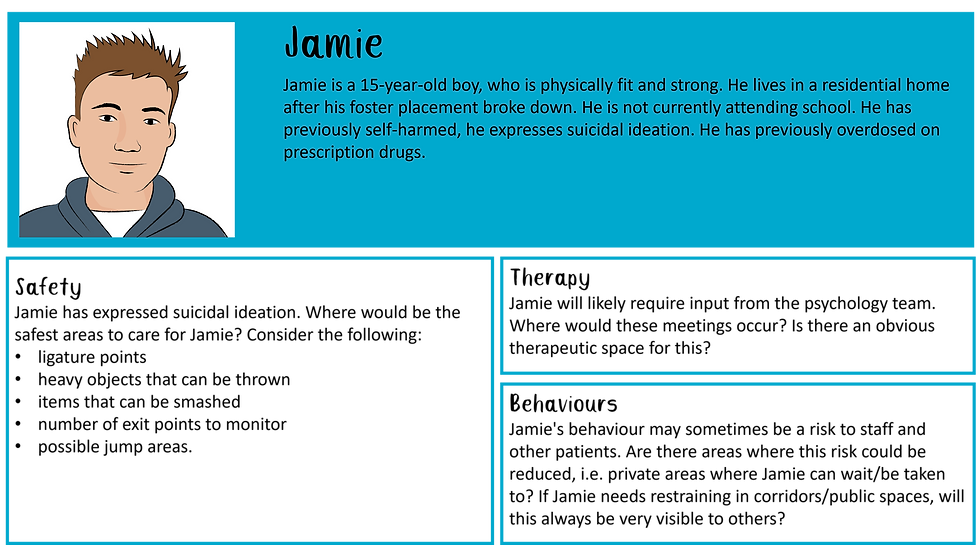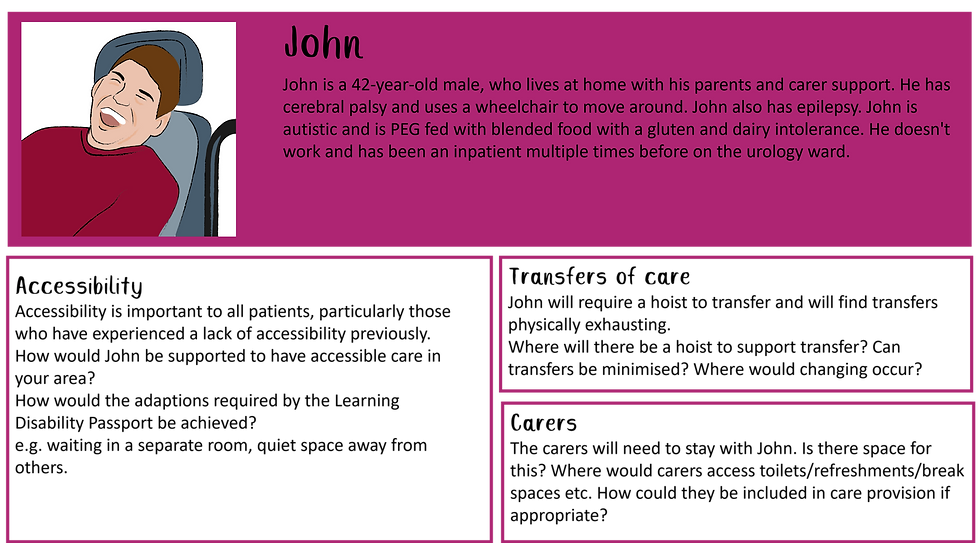I have to admit that personas have been a tool I've not used since university, often siding with the critique that you want real people, and live discussions.
However, when working to evaluate the design of a new hospital build at West Suffolk NHS Trust, as a team we could feel that the variety of patient needs were getting lost in the discussion about clinical spaces. We were at the stage of looking at 1:200 floorplans. We'd look at the Children's Ward for example, consider the main flows through the ward or reflect on where we'd need to be additionally careful about infection control (i.e. subtly isolating the oncology patients). I observed that certain challenges patients had experienced would be brought up by staff, e.g. 'how far is the walking distance for a patient with reduced mobility', however this was not consistent, and often required prompting.
It was not realistic to bring the variety of patients needed into the discussion to ensure all requirements were considered. So I pitched the idea of a modified-persona approach to the Future Systems team (those responsible for delivering the new hospital), and they loved the idea. We developed the personas with data the local team already had from patient and public consultations, and added to this information from National datasets and conversations with patients and patient groups. We used information about the patient population local to the hospital to drive the types of personas we focused on, e.g. it is a very rural area, so including a persona that has that as a factor. There is a really good post about developing personas here if you're interested in learning more
Normally, personas wouldn't include prompts for discussion, these would be led by the design team. However, we wanted the personas to be used without any HF specialist in the room, so included questions to nudge those reviewing a space to consider the specific needs driven by this persona. An example of one we developed is included below.

Some of the questions are very specific to a type of area to be designed (e.g. the need for a therapeutic space for conversations), however others (e.g. the safety considerations) can be considered given any space that Jamie could be in in the hospital.
We found by putting these personas in front of staff and asking them to consider the clinical space in light of these, it made a big difference to the engagement of the staff with the proposed floorplan, and also gave us many new challenges for our Architects to solve.
Some personas like Jamie, were developed for us to consider specific spaces. Others, e.g. John below, were used in the consideration of many of the spaces in the hospital.

Where possible we weaved in information from incidents, such as in John's persona it asks about where changing would occur. This is based on a number of stories about patients being changed on bathroom floors. Many bathrooms in hospitals do not have spaces to support changing an individual's continence products, such as a flat space that's not the floor to lie on, or a hoist to support transfer. In fact, those that do go down in legend (such as the one in Westmorland General Hospital by the main entrance!)
If you'd like to give feedback on the idea of these, or would like a full copy of all of these persona-like tools to use in your own project, drop me an email (hello@morganhumansystems.co.uk) and I'll send you a pdf.

Comentarios